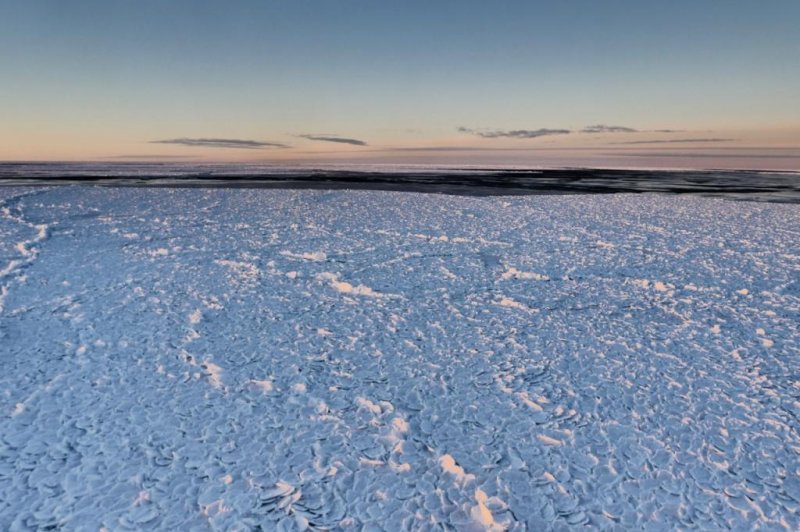The ice among Antarctica's polynyas resembles the scales of dragon. Photo by Institute for Marine and Antarctic Studies
May 10 (UPI) -- Researchers in Antarctica have spotted a rare phenomenon, a large patch of "dragon skin" ice.
"Dragon-skin ice is very rare, bizarre, evidence of a darker chaos in the cryospheric realm, not seen in Antarctica since 2007," Guy Williams, a researcher with the Institute for Marine and Antarctic Studies at the University of Tasmania, said in a news release.
Williams is one of 27 scientists aboard the U.S. icebreaker Nathan B. Palmer. The international science expedition is slowly making its way through the Antarctica's sea ice en route to the Ross Sea.
The dragon skin ice was found among the continent's coastal polynyas, areas of open water responsible for considerable ice production. Katabatic winds, which descend from the interior, are responsible for the nonstop ice production.
"Imagine your standard ice cube tray, filled once," Williams said. "After a week, you get one tray of ice cubes. But if you empty and re-fill the tray each night, you get so much more. That is what the katabatic winds are doing in the polynya, removing the ice, exposing the water and making more ice form."
Scientists are interested in Antarctica's polynyas because of their impact on local and global oceanography. As freshwater freezes out of the brackish mixture, a dense brine is left behind. This extra salty water sinks to the abyssal layer of the ocean.
The sinking salt water begins the process of overturning circulation, the ocean's conveyer belt.
The expedition is currently stalled by intense wind and waves, but scientists hope to study the sinking saltwater when the weather subsides.
"We will spend the next two weeks taking advantage of quiet periods when the katabatic winds drop off to observe the increase in salinity of the shelf waters below polynyas as brine-rejected during sea-ice formation rains down to depths below 1,000 meters in the Drygalski Trough," Williams said.















